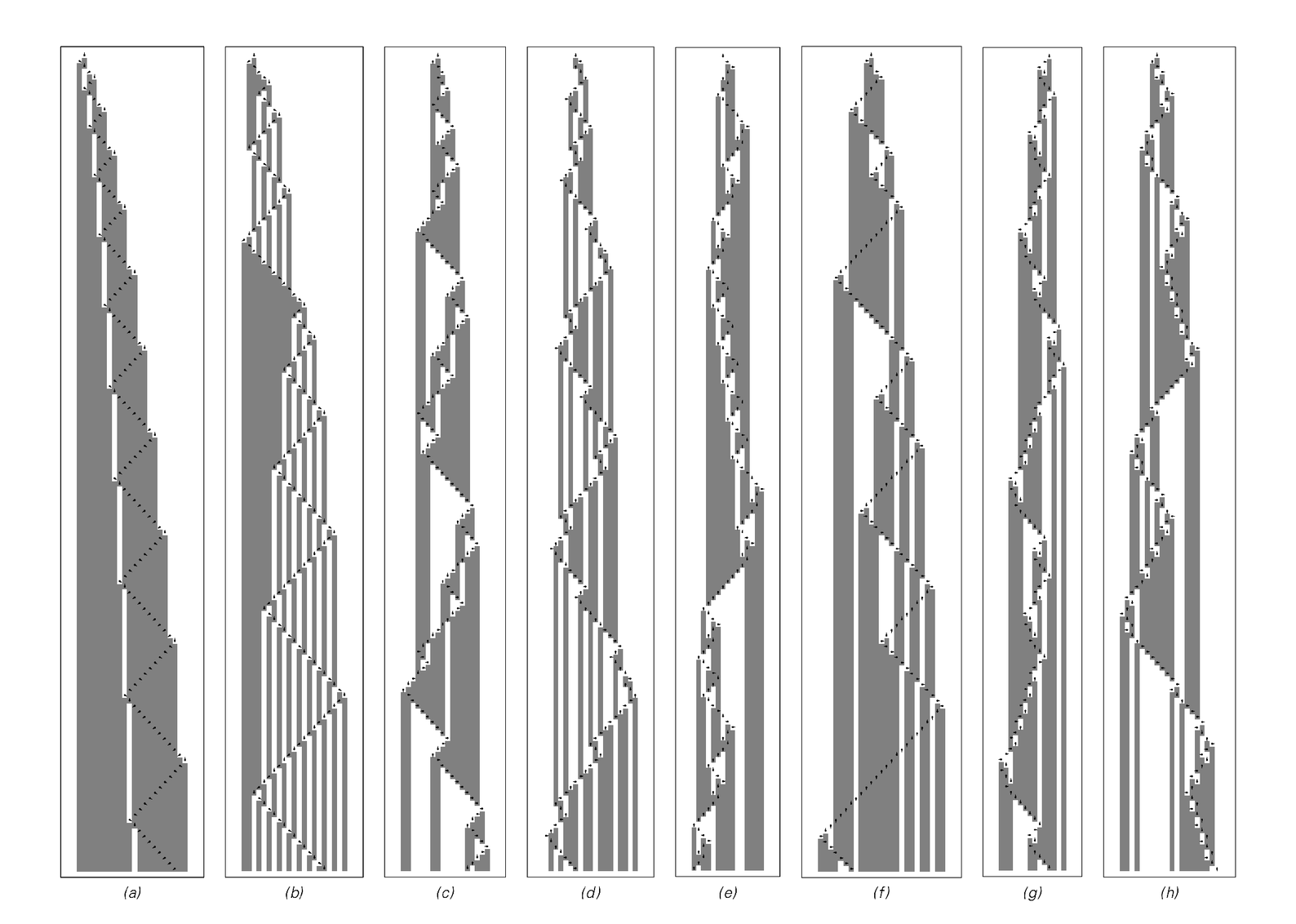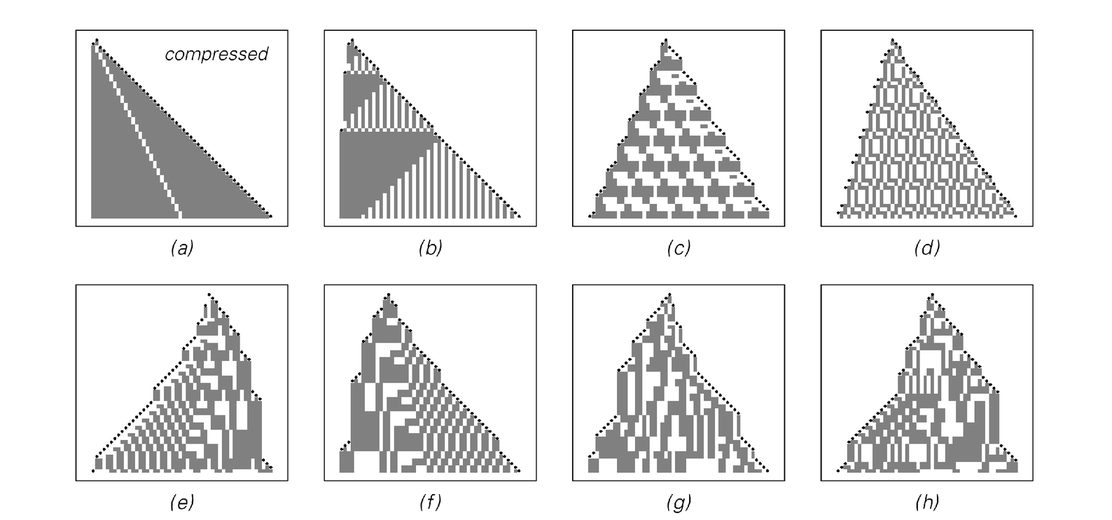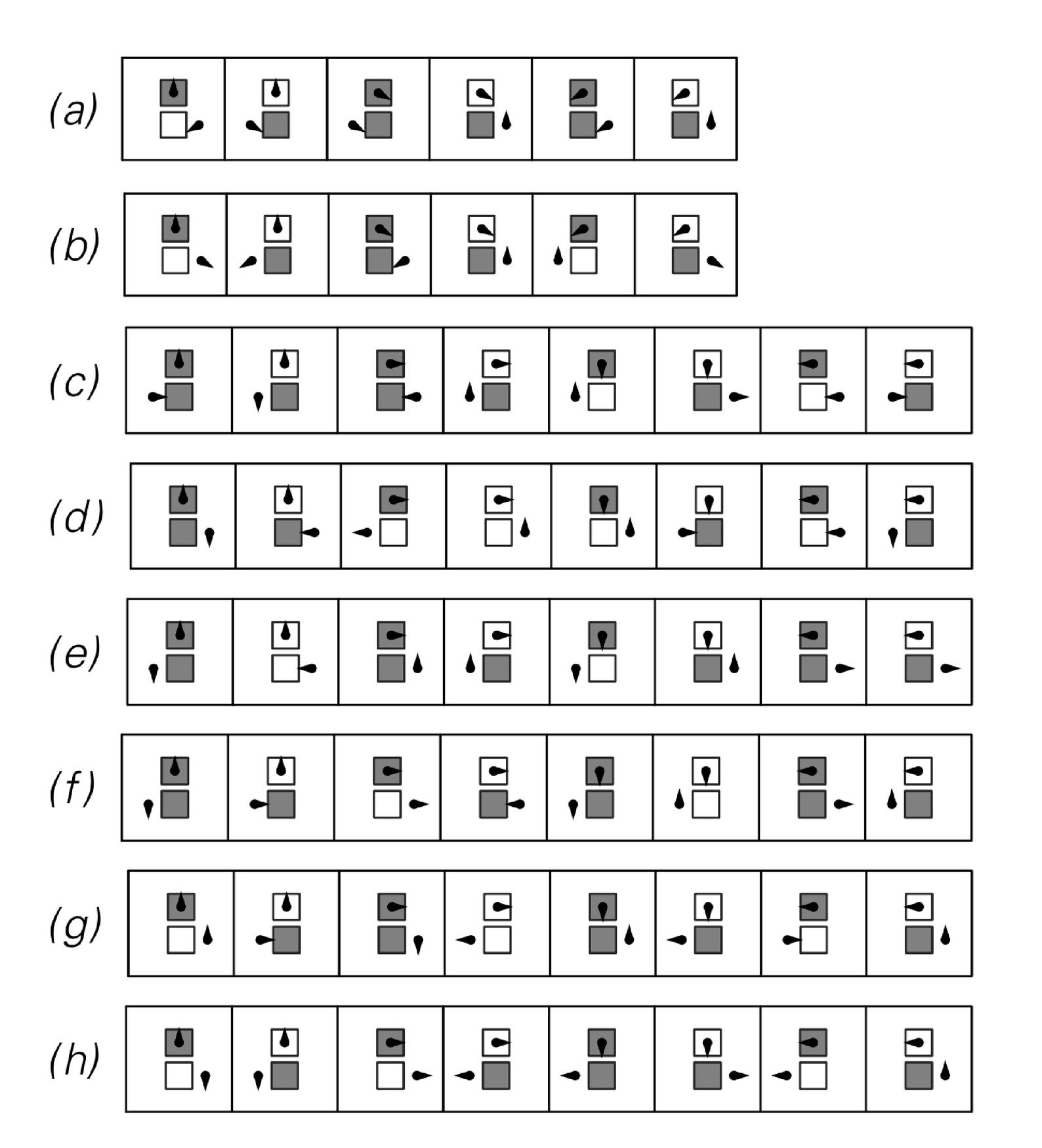
 |  |
Examples of Turing machines with three and four possible states. With three possible states, only repetitive and nested patterns are ever ultimately produced, at least starting with all cells white. But with four states, more complicated patterns are generated. The top set of pictures show the first 150 steps of evolution according to various different rules, starting with the head in the first state (arrow pointing up), and all cells white. The bottom set of pictures show the evolution in each case in a compressed form. Each of these pictures includes the first 50 steps at which the head is further to the left or right than it has ever been before.